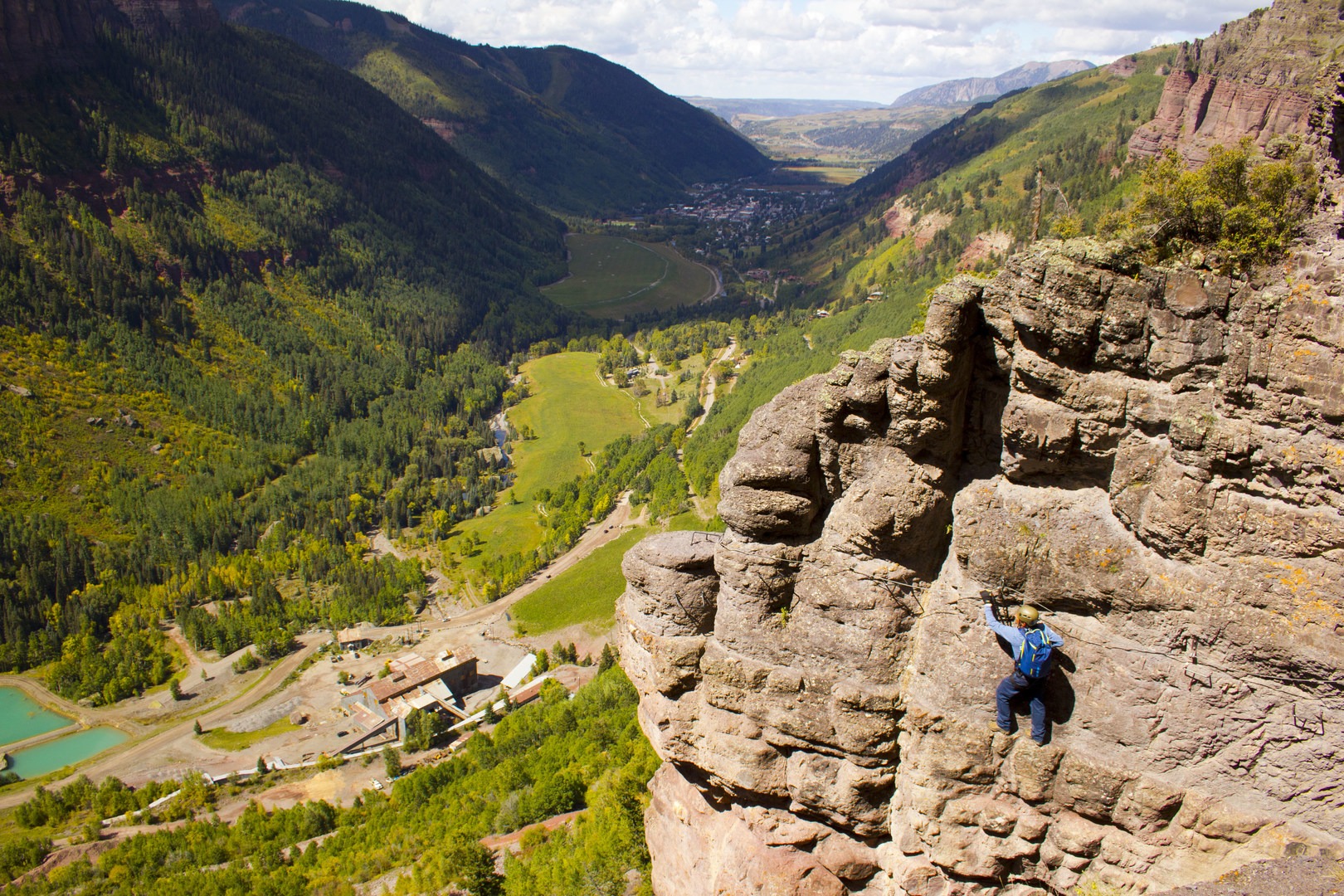Italian for “iron way,” the via ferrata is an aided climbing route consisting of a cable and stemples or footpegs. Originating in the Alps during World War I, the via ferrata makes few appearances in the American outdoors, with a few notable exceptions. The Via Ferrata in Telluride is one of them, and a classic.
Spanning roughly 2 miles of the northern face of the box canyon above Telluride, the Via Ferrata is an accessible and thrilling climb with incredible views of Ingram Peak, Bridal Veil Falls, Telluride, and the valley floor. Significant portions of the route are less of a climb and more of a hike, but most of this skirts a narrow trail at the edge of a cliff, and thrill-seekers will find their blood pumping a little faster while navigating sections of trail no wider than a couple of feet. Not enough? Traversing several hundred feet, the so-called “Main Event” shuffles along a bolted cable and stemples thousands of feet above the canyon floor.
Traversing the Via Ferrata requires a harness, slings, and a helmet, but without a belay, it’s a somewhat unique climbing experience. Sport climbers who have cleaned fixed anchors will understand what it’s like to be off-belay a few hundred feet off the ground affixed to the wall by a personal and protection and that’s it. The Main Event creates a similar effect when climbers pause their shuffling to lean back on their slings and look down.
The Via Ferrata is well protected throughout its course. Be prepared to plan around the weather, which typically brings rain in the afternoon. Also be prepared for crowds, as the Via Ferrata is no longer the underground secret of yore. Most importantly, note that the Via Ferrata can be approached from the west or the east. Congestion at the Main Event will force one party to yield the right of way, so check for other climbers before this section to avoid jams. During the high season when the route is busy, use an east-to-west route. Those with four-wheel drive, high-clearance vehicles can park right at the eastern access point, but note that parking is limited to fewer than five vehicles.


























Comments
Sign In and share them.